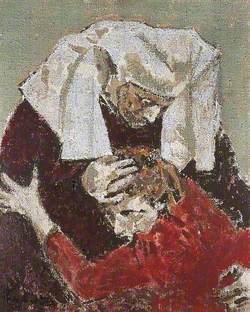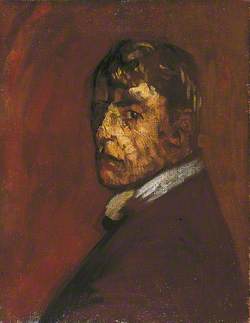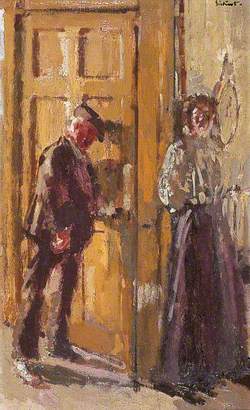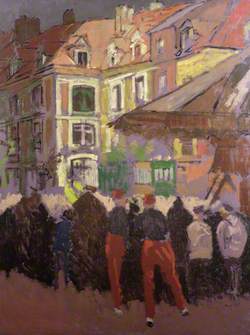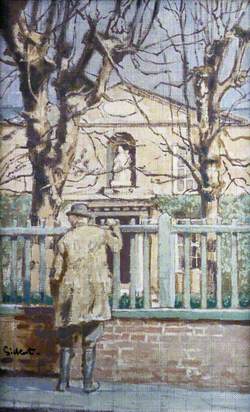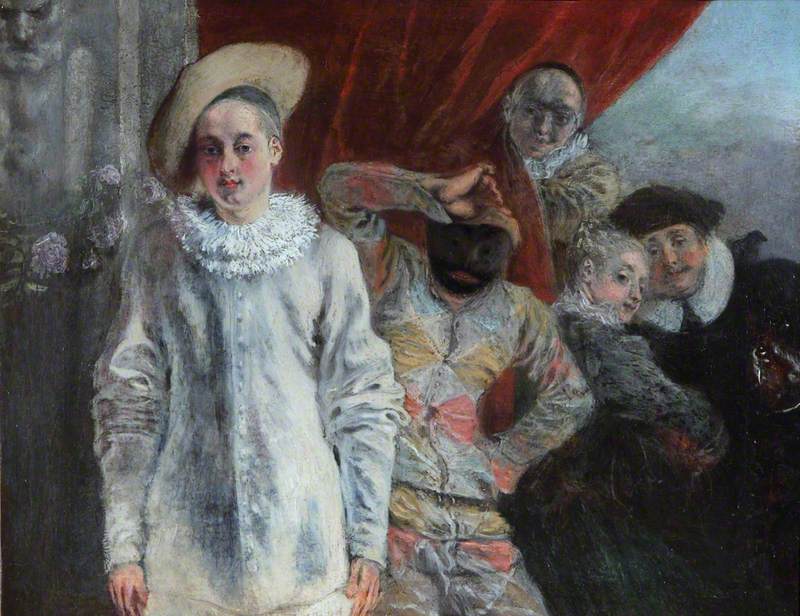How you can use this image
This image is available to be shared and re-used under the terms of the Creative Commons Attribution-NonCommercial-NoDerivatives licence (CC BY-NC-ND).
You can reproduce this image for non-commercial purposes and you are not able to change or modify it in any way.
Wherever you reproduce the image you must attribute the original creators (acknowledge the original artist(s) and the person/organisation that took the photograph of the work) and any other rights holders.
Review our guidance pages which explain how you can reuse images, how to credit an image and how to find more images in the public domain or with a Creative Commons licence available.
DownloadNotes
Add or edit a note on this artwork that only you can see. You can find notes again by going to the ‘Notes’ section of your account.
In 1887, two years after he had been introduced to Edgar Degas and French Impressionism, Sickert painted the first of his music hall scenes. Thereafter popular entertainment was a recurring theme in his work. While 'Brighton Pierrots' belongs to that strand of his production, its highly original composition and its use of warm, vivid colour marks a departure from earlier work and points to developments in Sickert's work of the 1920s and 1930s. Sickert spent much of the late summer of 1915 in Brighton as the guest of his patron, the painter Walter Taylor. For five weeks he regularly went to see the Pierrot's perform on a small, temporary stage erected on Brighton beach, making as he did so several preparatory sketches for a painting. On his return to London, Sickert produced the first of his 'Brighton Pierrots' (private collection, reproduced Baron 1973, p.
The unusually intense chromatic accents in the painting are achieved by paint smudged dry and flat onto the canvas. This technique is used to great effect in the maroon colouring of the two Pierrots. Colour and light are also used to evoke the underlying melancholy of the scene. The twilight glow suffusing the audience and seafront in peach and purple is broken by the glare of phosphorous stage lights, the acid tints of which catch on the performers' clothes and faces. The juxtaposition of dying daylight with garish illuminations and a depleted audience underscores the end of season atmosphere. In the context of the First World War and the reports filtering back to Britain in the summer of 1915 of very heavy losses at the Front, the empty deckchairs may suggest the desolation of war.
Further reading: Wendy Baron and Richard Shone (eds.), 'Sickert: Paintings', exhibition catalogue, Royal Academy of Arts, London 1992, reproduced p.252, pl.88 (colour) Wendy Baron, Sickert, London 1973, pp.151–152 Toby Treves May 2000
Title
Brighton Pierrots
Date
1915
Medium
Oil on canvas
Measurements
H 63.5 x W 76.2 cm
Accession number
T07041
Acquisition method
Purchased with the assistance of the Art Fund and the Friends of the Tate Gallery 1996
Work type
Painting


